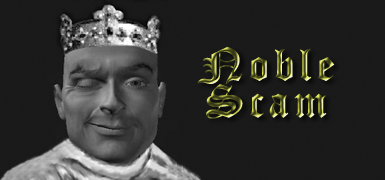 |
||||||
| HOME | INTERVIEWS | WHAT DO WE LOOK FOR? | OUR BRIAND FAMILY | CONTACT | ||
 |
||||||
|
The fraud in genealogy always has existed, since a long time ago. Only considering that the positions of power and the nobility and prestige of the individuals were always a matter of heritage, since the existence of the most ancient societies, makes it easy to understand. The fight for the rights of the royal thrones has created frequent manipulations on genealogies. When Edward the 3rd of England almost became a French king, being the only heir (grandson by maternal line) of Philip IV of France (1286-1314, also known as "Philippe Le Bel") the Salic Law was applied. It signified that women (as his mother) were forbidden of having death duties on crown successions. Later several English kings claimed for the French throne proclaiming being Charlemagne descendants. At the Spain of Catholic Monarchs, Ferdinand and Elizabeth, at the 15th century, the problem of Jewish conversions to the Christianity (as a way to be allowed to remain living in Spain) brought around also a lot of genealogic adulterations. However, the Catholic Monarchs accepted with no problem all the converted Jews, even giving them positions in the court and noble titles. But later, at the arriving of the Bourbons monarchy, the Law of Pureness of Blood was promulgated, setting that who wanted to access some relevant positions, should present a proof of "pureness of blood", having at least 8 proven generations of pure blood, which means Christian origins. The fastest resource of who was pressured by that situation, was simply to eliminate Hebrew ancestors from their genealogies, or to replace them by Christian forbears. As, in all ages, since the most ancient civilized societies, nobility ought to be proven, at the Middle Age, or in further centuries, continuous genealogy adulterations were committed all along the History. Most of these genealogies still remain between us, with fake testimonies, or without any at all. In more recent times, was on fashion to counterfeit familiar histories, finding for them noble ancestors everywhere. One of the most famous forgers in this sense, was Gustav Anjou, (which was not his real name), a Sweden born in 1863 and immigrated to the United States in 1890. His fees for building familiar trees were around 9 thousand dollars each. He use to do a history of their last names, another of the family background, giving them also an impressive coat of arms, and of course, making them descend from the most noble royal houses. He made hundreds of fake genealogies, with non verified data or adulterated. The Family History Library, in Salt Lake City, (the Mormon's files) has a list of 109 fake Anjou's genealogies. It was what could be detected. The others will remain disguised. Anjou was not, certainly, the only one: at the Family History Library anybody can find a microfilmed document, the Van Meters family genealogy of New York. A French genealogist make them descend from the Plantagenet monarchy, simply linking a coincident surname, Du Bois, with some of their ancestors. Brian Leese was an Irish who died in 1989, and was proved that he forged hundred of family trees, deceiving a lot of people and obtaining succulent incomes. There's a lot of more cases of forgery; maybe we'll never know all of them. Approximately at the middle of the 90's, was frequent to find in several malls a couple of sellers with a computer, offering to the people their "coat of arms" and the "history of their last names". It was based in a completely wrong assumption: first, the coat of arms do not belong to any surname, but to specific families with that surname; secondly, it's preposterous to assume that every one who carries a more or less common last name in the world could share the same coat of arms. Some websites, in Internet, also sell "prestige" through coat of arms, based in the same wrong assumption. One of the main problems about the current Internet databases is that, due to the compulsion of many genealogists of having more and more ancestors and to be linked with thousands of surnames, they are all the time delivering non verified or wrong information to the databases. The databases' administrators, who are not responsible for what is contained in those deliveries, do not verify the accuracy of the information: they only publish everything, without any kind of control. It's easy to realize how many wrong genealogies could be shaped from all those inaccuracies. The Genealogy Fraud website assure that around the 55% of the genealogies published in Internet have serious mistakes. A lot of the "free options" that these sites offer, are not really for free. After the subscription, you will be flooded by hundreds of e-mails offering you different records of your last name, covering everything: wars, shipwrecks, the French Foreign Legion, and so on. Be careful. Most of these lists have invented information, and they are long enumerations of names and last names with no serious foundations; these lists are either commercialized between genealogy sites. It's recommended to verify if these sites have a real physical address, or a phone number, rather than only an e-mail address. Before you believe that you have an important information about your family in your hands, is good to verify it. To relate kinships, dates, names, and not only one time, but to look for several ways of veracity. Just think this: genealogy is now on fashion: forgery always has been.
Pablo Briand, July 15 2009. |
||||||